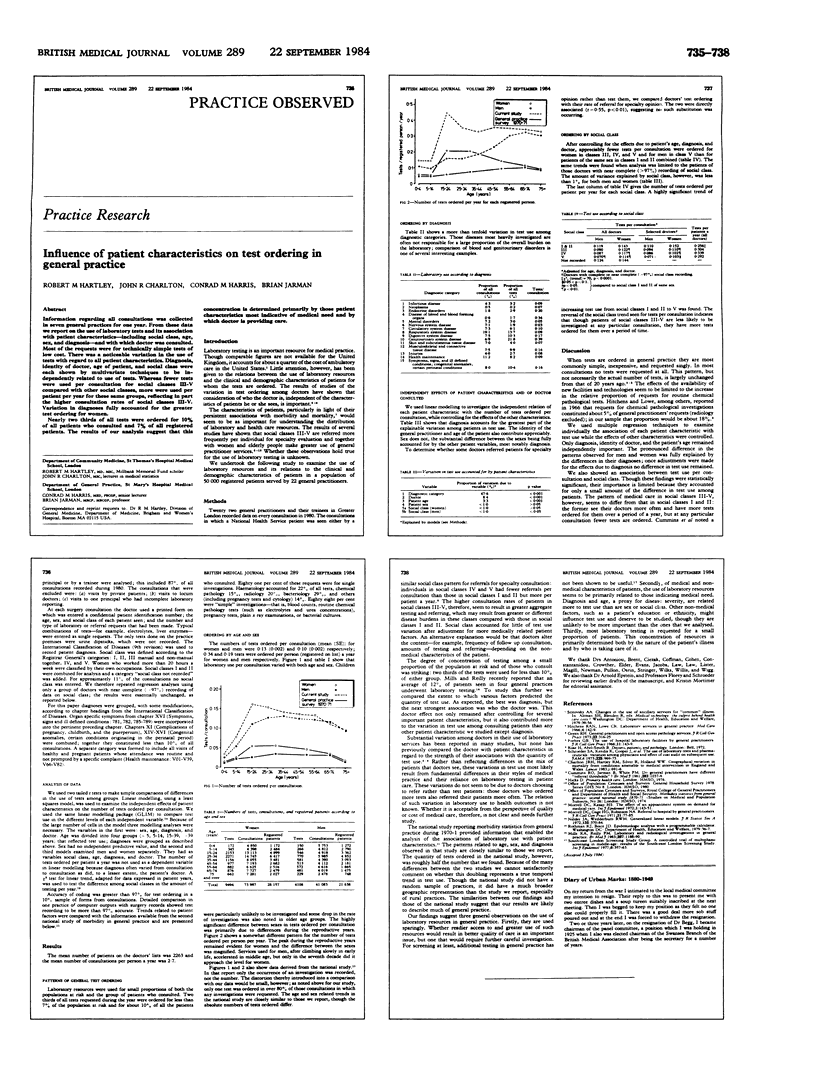Abstract
Information regarding all consultations was collected in seven general practices for one year. From these data we report on the use of laboratory tests and its association with patient characteristics--including social class, age, sex, and diagnosis--and with which doctor was consulted. Most of the requests were for technically simple tests of low cost. There was a noticeable variation in the use of tests with regard to all patient characteristics. Diagnosis, identity of doctor, age of patient, and social class were each shown by multivariate techniques to be independently related to use of tests. Whereas fewer tests were used per consultation for social classes III-V compared with other social classes, more were used per patient per year for these same groups, reflecting in part the higher consultation rates of social classes III-V. Variation in diagnoses fully accounted for the greater test ordering for women. Nearly two thirds of all tests were ordered for 10% of all patients who consulted and 7% of all registered patients. The results of our analysis suggest that this concentration is determined primarily by those patient characteristics most indicative of medical need and by which doctor is providing care.
Full text
PDFPage 735-738



